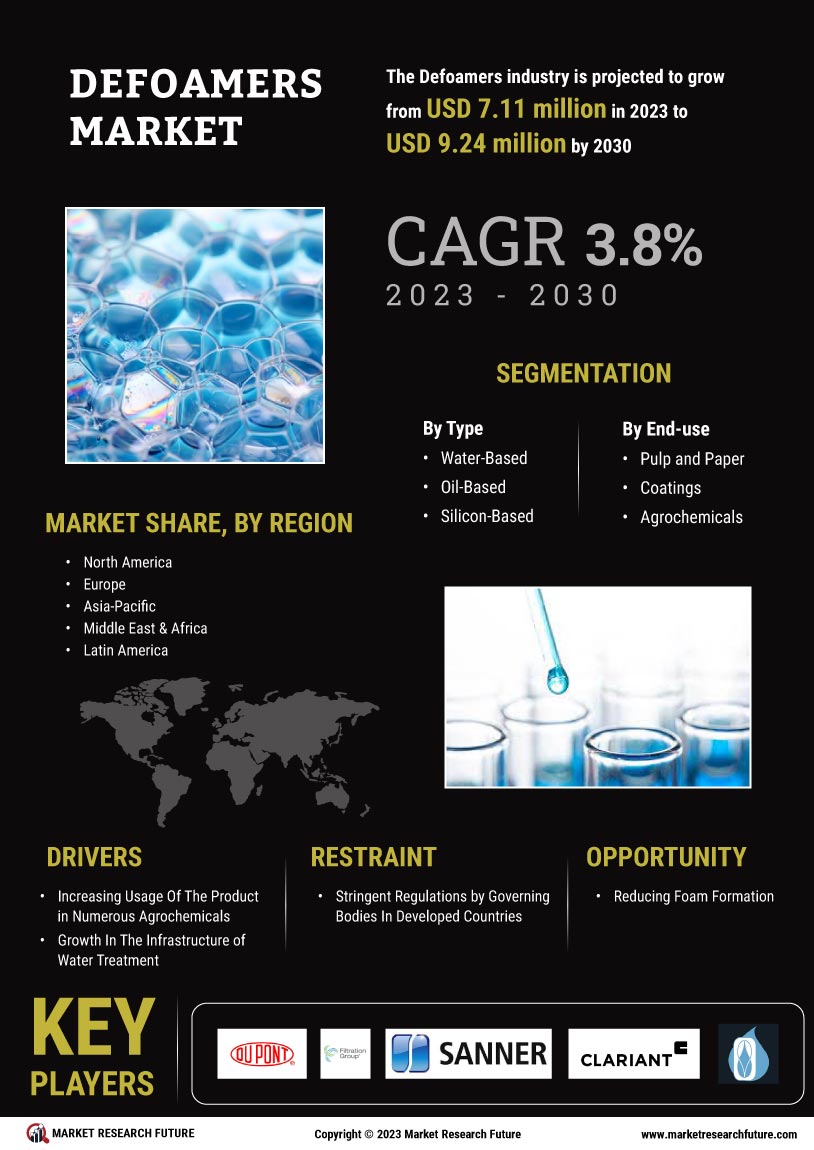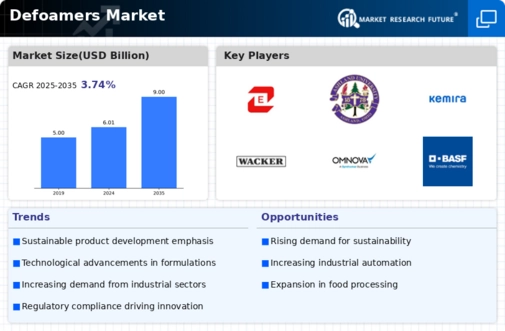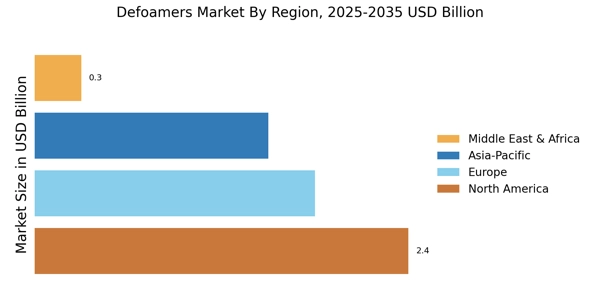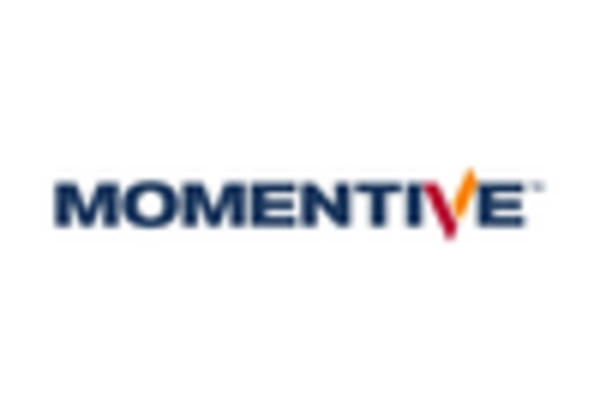Growth in Chemical Manufacturing
The Defoamers Market is significantly influenced by the growth in chemical manufacturing. As the production of chemicals often involves processes that generate foam, the demand for defoamers becomes critical. Industries such as paints, coatings, and adhesives utilize defoaming agents to enhance product performance and stability. Recent statistics indicate that the chemical manufacturing sector contributes around 25% to the overall defoamers market. The ongoing expansion of this sector, driven by increasing industrial activities and innovations, suggests a robust future for defoamers, as manufacturers seek to optimize their processes and improve product quality.
Rising Demand in Food and Beverage Sector
The Defoamers Market experiences a notable surge in demand from the food and beverage sector. This sector requires defoamers to ensure product quality and consistency, particularly in processes such as brewing, fermentation, and food processing. The increasing consumer preference for high-quality food products drives manufacturers to adopt defoaming agents to eliminate foam, which can affect taste and texture. According to recent data, the food and beverage segment accounts for approximately 30% of the total defoamers market share. As the industry continues to expand, the need for effective defoaming solutions is likely to grow, thereby propelling the Defoamers Market forward.
Expanding Applications in Personal Care Products
The Defoamers Market is witnessing an expansion in applications within the personal care sector. Products such as shampoos, conditioners, and lotions often require defoaming agents to improve texture and stability. The growing consumer awareness regarding product formulation and quality is driving manufacturers to incorporate effective defoaming solutions. Recent market analysis suggests that the personal care segment is projected to account for a significant share of the defoamers market, potentially reaching 20% by 2026. This trend indicates a promising future for the Defoamers Market as it adapts to the evolving needs of the personal care industry.
Technological Innovations in Defoaming Solutions
Technological advancements play a pivotal role in the evolution of the Defoamers Market. Innovations in formulation and application techniques have led to the development of more effective and efficient defoaming agents. These advancements enable manufacturers to address specific challenges in various applications, such as reducing foam in high-viscosity systems or improving performance in extreme conditions. The introduction of smart defoaming solutions, which can adapt to changing process conditions, is also gaining traction. As industries seek to enhance operational efficiency, the demand for technologically advanced defoamers is expected to rise, further propelling the Defoamers Market.
Environmental Regulations and Sustainability Initiatives
The Defoamers Market is increasingly shaped by stringent environmental regulations and sustainability initiatives. Manufacturers are under pressure to adopt eco-friendly defoaming agents that comply with regulations aimed at reducing environmental impact. This shift towards sustainable practices is prompting the development of bio-based defoamers, which are derived from renewable resources. The market for these eco-friendly alternatives is projected to grow, as companies strive to meet consumer demand for sustainable products. This trend not only aligns with regulatory requirements but also enhances brand reputation, thereby driving growth in the Defoamers Market.


















Leave a Comment